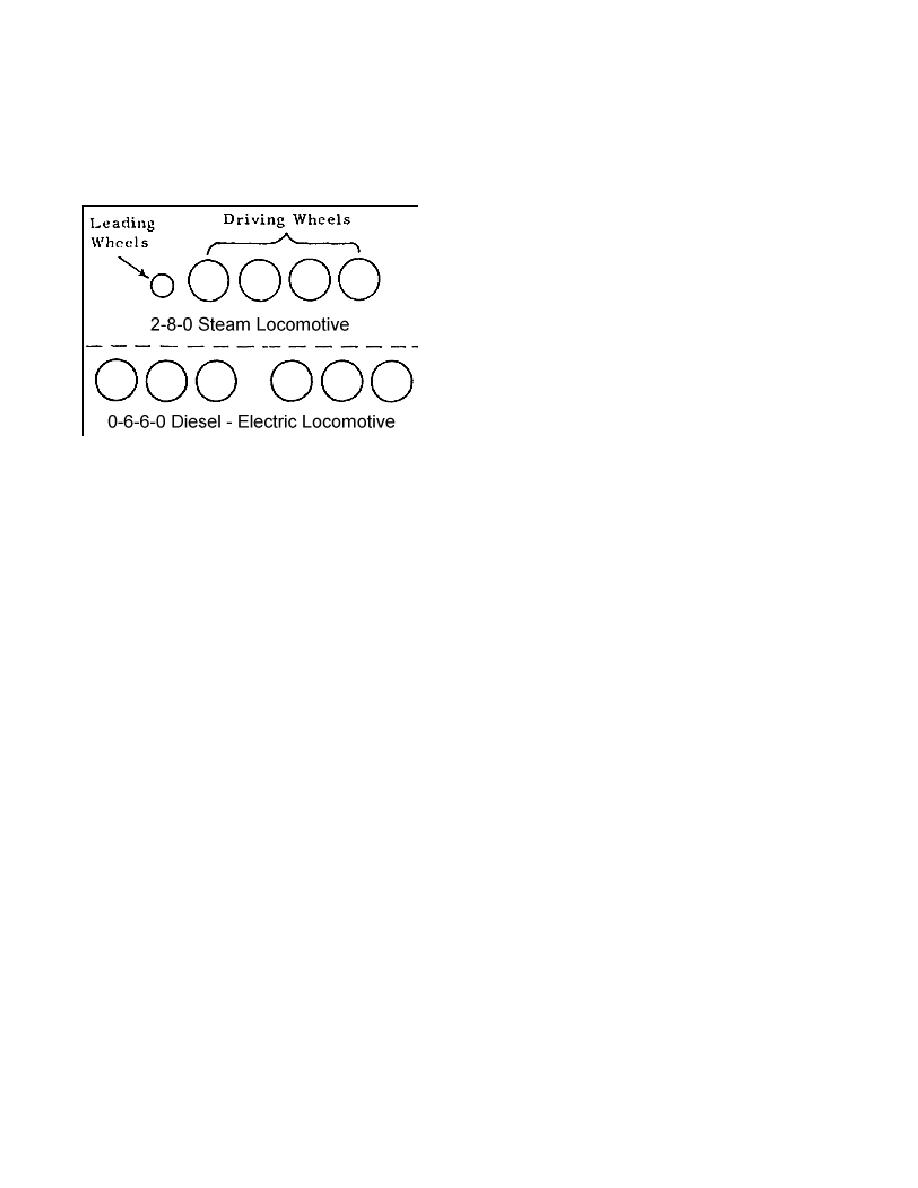
the front end of the locomotive. For a steam locomotive, the first
figure denotes the number of wheels in the lead truck, the second
represents the number of drive wheels, and the last figure the number
of wheels in the trailing truck. Tender wheels are not included. An
illustration of the Whyte system showing the wheel arrangements of
two locomotives is shown in the inserted sketch. Since the wheel
arrangement represents a side view of
the locomotive only one wheel of each
pair is shown. The 280 steam
locomotive shown in the illustration
has 2 leading wheels, 8 coupled
driving wheels, and no trailing
wheels. The wheels of the leading
trucks are nondriving. Army diesel
electric locomotives have no leading
or trailing wheels; this is denoted
by a zero. The 0660 diesel
electric locomotive shown in the
illustration has six driving wheels on the front truck assembly and
six on the rear truck assembly with no leading or trailing wheels.
The Whyte classification system is generally accepted in Great
Britain and the British Commonwealth and in North and South America.
Another system, commonly used in Europe and other parts of the world,
uses letters and figures to identify a diesel or electric locomotive
by its axles. Letters are used for driving axles and numbers for
nondriving axles. In this system, "A" stands for one driving axle,
"B" for two, "C" for three, and "D" for four. A small "o" placed
after the initial letter shows that each axle is individually
powered. Thus, a single unit locomotive with two individually
powered twoaxle trucks would be classified as a BoBo. One with
three axle trucks in which the center axle is an idler would be
designated as an A1AA1A.
The wheel arrangements as designated by the Whyte system are
particularly important because they indicate the number of driving
wheels a locomotive has. The pulling capacity of a locomotive is
directly related to the number of driving wheels (drivers) and the
amount of weight that rests on them.
8



 Previous Page
Previous Page
